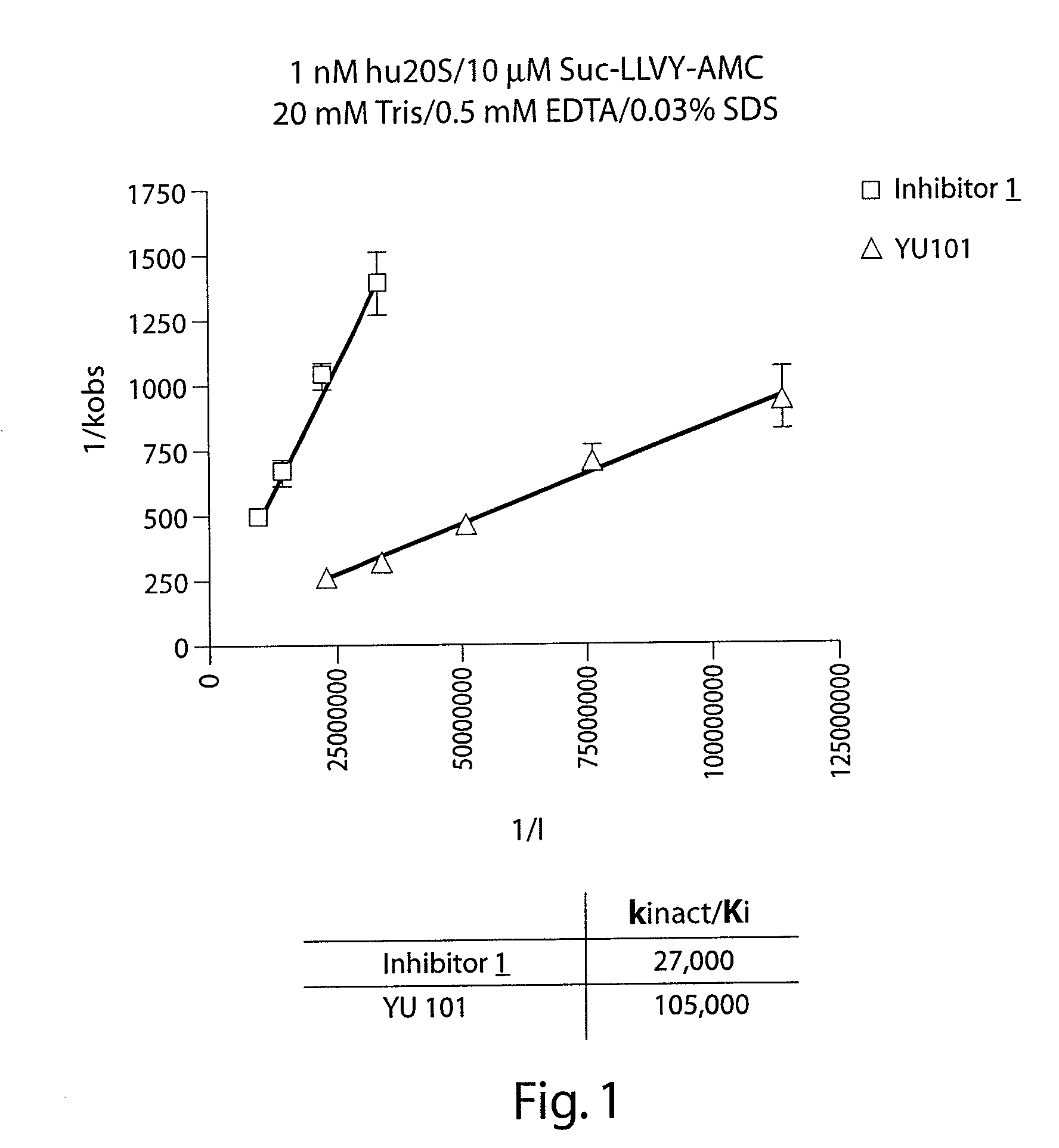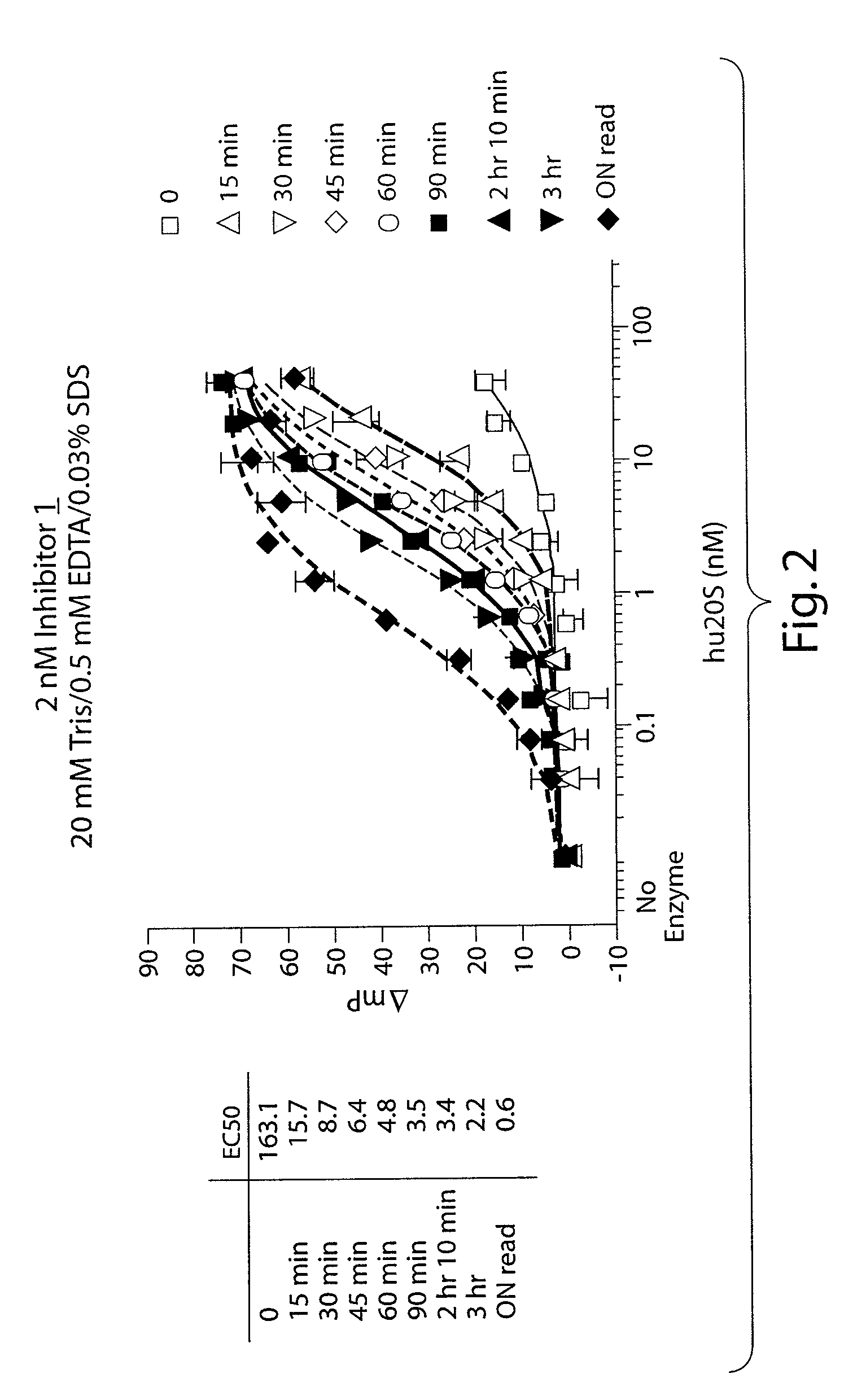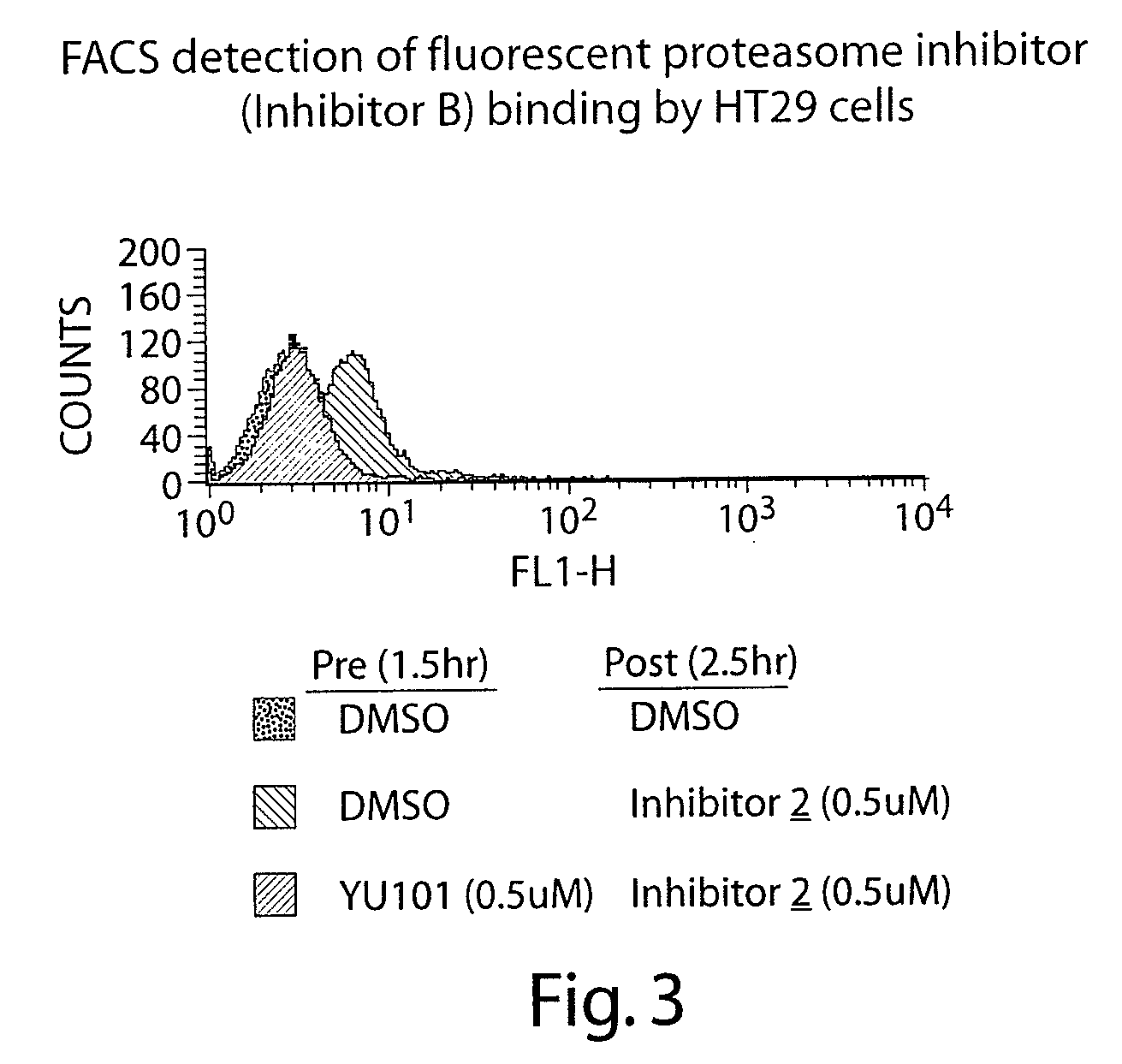Compounds for enzyme inhibition
a technology of enzyme inhibition and compounds, applied in the field of compounds and methods for enzyme inhibition, can solve the problems of general lack of specificity, stability, or potency necessary to explore and exploit the role of proteasomes at the cellular and molecular level, and achieve the effect of inhibiting particular activities
- Summary
- Abstract
- Description
- Claims
- Application Information
AI Technical Summary
Benefits of technology
Problems solved by technology
Method used
Image
Examples
example 1
Synthesis of Tagged Inhibitors 1 and 2
[0198]
Synthesis of (A)
[0199]To a solution of NBoc Leucine (11.56 g, 50.0 mmol, 1.0 eq.) and phenylalanine methyl ester (10.78 g, 50.0 mmol, 1.0 eq.) in 500 mL of DMF is added HOBT (10.81 g, 80.0 mmol, 1.6 eq.) and DIEA (25.85 g, 35 mL, 200.0 mmol, 4.0 eq.). The mixture is cooled to 0° C. in an ice-water bath and BOP (35.38 g, 80.0 mmol, 1.6 eq.) is added in several portions over five minutes. The reaction is placed under an atmosphere of argon and stirred overnight. The reaction is diluted with brine (1000 mL) and extracted with EtOAc (5×200 mL). The organic layers are combined and washed with water (10×100 mL), brine (2×150 mL) and dried over MgSO4. The MgSO4 is removed by filtration and the volatiles are removed under reduced pressure to give (A).
Synthesis of (B)
[0200]To a 50 mL 0° C. cooled solution of 80% TFA / DCM is added compound A (18.0 g, 45.86 mmol, 1.0 eq.). The solution is stirred and allowed to warm to room temperature slowly. The rea...
example 2
Activity of Fluorescent Proteasome Inhibitor
[0204]The ability of Inhibitor 1 to inhibit the proteolytic activity of the human 20S proteasome (hu20S) both in vitro and in cells was tested using the fluorescent substrate for the chymotryptic-like activity of the proteasome, Suc-LLVY-AMC as shown in FIG. 1 and Table 1. Fluorescence was measured using the excitation wavelength of 340 nm and an emission wavelength of 465 nm. When the concentration of Suc-LLVY-AMC is 10 μM, and the 1 nM hu20S is used, the kinact / Ki value for Inhibitor 1 is 27,000 M−1sec−1, which is only 4× lower than the non-labeled analog. The assay was carried out in 20 mM Tris, pH 8.0, 0.5 mM EDTA, 0.03% SDS buffer with 5% DMSO.
TABLE 1CellChymotrypticActivityCell ViabilityHuman 20S Chymotryptic8226HT298226HT29Activity1 hr4 hr24 hr72 hrkinact. / Kikobs / [I]VfIC5OIC50IC50IC50IC50Structure(M−1sec−1)(M−1sec−1)(nM)(nM)(nM)(nM)(nM)27,00023,0009.4340191105,00093,50027.33.356.8
example 3
Measuring Binding to the Proteasome via Fluorescence Polarization
[0205]2 nM of Inhibitor 1 was incubated with a serial dilution of purified human 20S proteasome (from 400 pM to 40 nM) in a 20 mM Tris, pH 8.0, 0.5 mM EDTA, 0.03% SDS buffer and was allowed to bind to the proteasome during an incubation at room temperature as shown in FIG. 2. Fluorescence polarization was measured by exciting the samples at 485 nm and detecting the emitted fluorescence at 535 nm in a microwell plate in a fluorimeter capable of measuring fluorescence polarization (Tecan GENios Pro). Readings were made at timed intervals and demonstrated an increase in the amount of bound Inhibitor 1 over time. When the concentration of human 20S was low (free Inhibitor 1), the MP was about 40 millipolarization units (mP). The fluorescence polarization at high concentrations of human 20S (bound Inhibitor 1) was about 110 mP.
PUM
| Property | Measurement | Unit |
|---|---|---|
| emission wavelength | aaaaa | aaaaa |
| excitation wavelength | aaaaa | aaaaa |
| pH | aaaaa | aaaaa |
Abstract
Description
Claims
Application Information
 Login to View More
Login to View More - R&D
- Intellectual Property
- Life Sciences
- Materials
- Tech Scout
- Unparalleled Data Quality
- Higher Quality Content
- 60% Fewer Hallucinations
Browse by: Latest US Patents, China's latest patents, Technical Efficacy Thesaurus, Application Domain, Technology Topic, Popular Technical Reports.
© 2025 PatSnap. All rights reserved.Legal|Privacy policy|Modern Slavery Act Transparency Statement|Sitemap|About US| Contact US: help@patsnap.com



